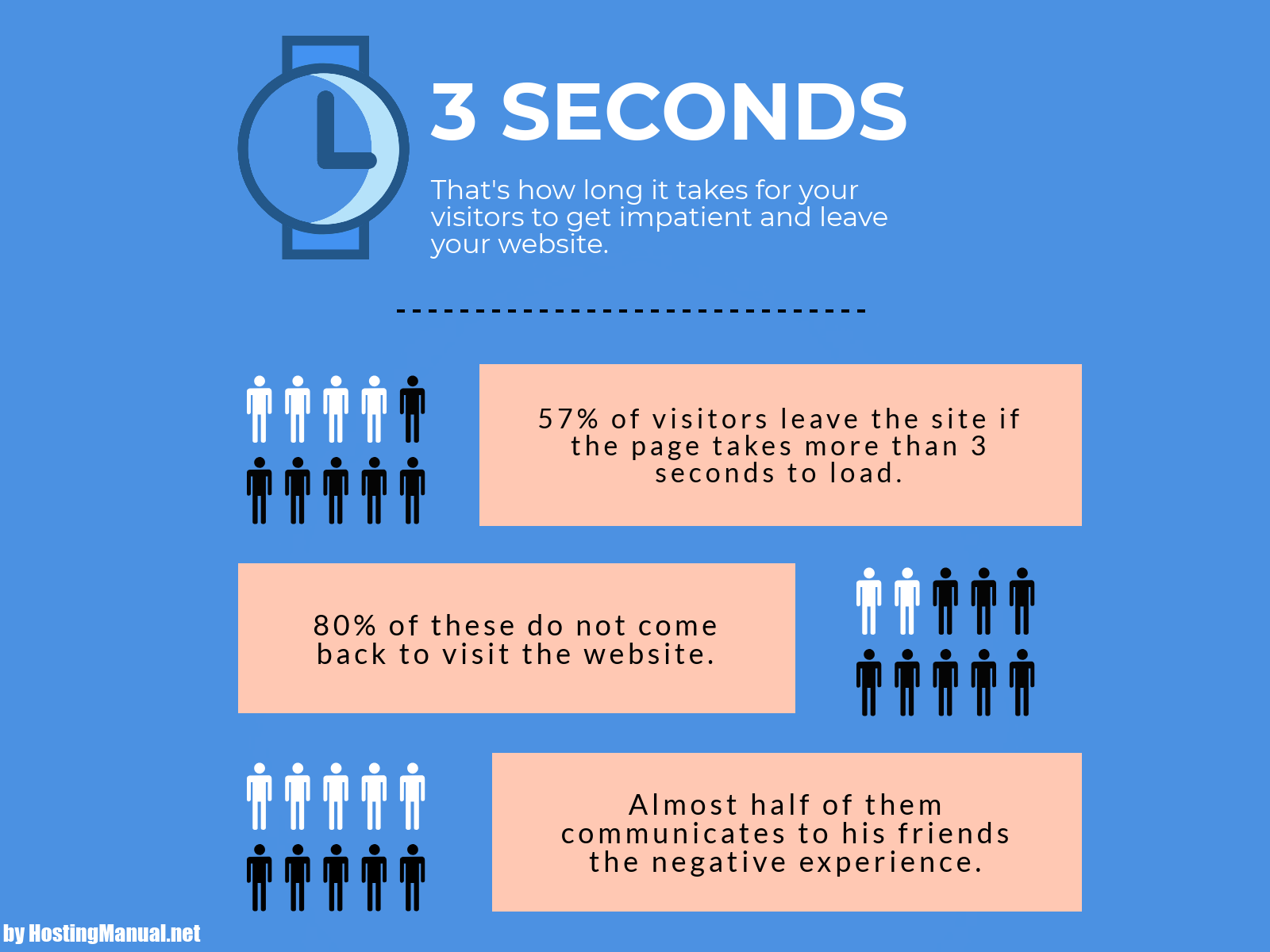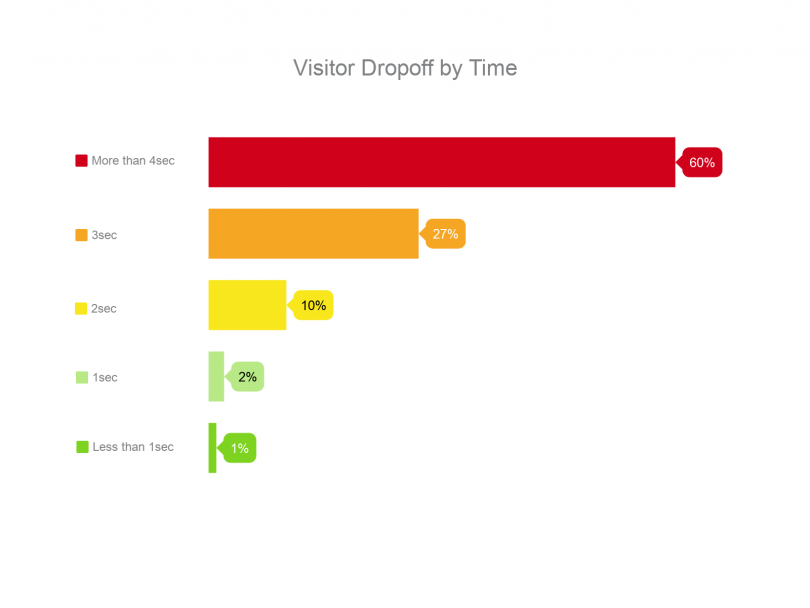Regardless of the importance of this aspect, online
When it comes to user experience, a website’s loading time is one of the deciding success factors. The patience of visitors is steadily decreasing. Most of them will abandon a site if it doesn’t load within 3 seconds. For a business that means lost sales, leads, and opportunities. It’s a real sales killer.

The same is true for the search process: if product images take too long to load or the search results are not displayed fast enough, shoppers generally do not wait long and break off the purchasing process. For an online retailer, this means that the conversion from visitors to customers is negatively impacted even before it started.
Marketers are more focused on aesthetics, content, social media, paid search and other online marketing activities. While focusing on these topics, they miss the tremendous potential and the importance of optimizing website performance.
Bounce rates Studies
The results of various studies show that nearly 50% of Internet users expect web page load times of less than 2 seconds. If the page is loaded only after 3 seconds, a large part of the visitors leaves the website.
Also, nearly 80 percent of users who have had poor performance experience avoid the pages permanently and never return. Delaying webpage load time by one second reduces customer satisfaction by approximately 16 percent.
Other studies prove the direct relationship between website load time and page traffic. For example, Google experimented in 2006. The number of displayed search results was increased from 10 to 30. As a result, the loading time was increased by a mere half second. The result was dramatic, with traffic and revenue down about 20 percent.
If Facebook, Google, and Bing have noticed that slow websites are losing visitors, surely anyone can understand that this has a massive impact on the conversion rates, sales, and revenues of large eCommerce websites.
Real-world Examples
The following facts demonstrate the positive impact of fast load times on the user experience and conversion rate.
1. Amazon: 1% sales loss for every 100ms load time
Back in 2007 Amazon discovered a connection between load time and turnover. It was proven that for every 100ms extra loading time, Amazon loses a turnover of 1%.
2. Walmart: +2% conversion per 1 second load time improvement
Walmart, one of the top retail chains in the world, also realized that optimizing the load times in their online shop had a significant impact on their conversion rate. They saw a 2% increase in conversion for every second of improvement. At Walmart’s scale that’s real money!
The same pattern is seen in a Tagman study, but with even more dramatic results. Tagman notes that any delay in load time by one second means a lost revenue of 7%. It is interesting to see that both Tagman and Walmart found the same patterns in their investigations.
3. Influence of website performance on shopping behavior
According to KISSmetrics, nearly 80% of online shoppers are dissatisfied with website performance and load times, which has a significant impact on customer satisfaction, return and user experience.
How Website Speed Impacts Search Engine Traffic
It’s not news that Google looks at website speed when it ranks sites. In 2010, Google officially announced that load times would be a factor in its search ranking algorithm and reiterated it recently.
Google prefers websites with fast load times as it positively impacts the user experience and reduces operational costs.
Another benefit of fast websites is that search engines can crawl them more effectively. Of course, this is an excellent advantage for large eCommerce sites with thousands of pages. Fast websites therefore potentially offer the opportunity to improve organic search rankings.
And besides organic search results, load time is a factor in determining the Google AdWords Quality Score. This can cost companies significant money.
What is the Optimal Load Time?
It’s not easy to find accurate information on optimal load time.
But that’s not surprising. The optimal load time can change from visitor to visitor.
Some people are naturally more impatient, while others can wait a couple of seconds without getting upset. What type of content they expect can also influence their patience.
For example, if you want to watch a video, you probably accept a longer loading time. On the other hand, if you are visiting a text-heavy web page, your patience is quickly fading.
The same applies to your visitors. If they have to wait too long, they will quickly get distracted and start doing other things on the side or leave your site altogether.
According to a study by Akamai, 40% of visitors would leave a website if they had to wait more than 3 seconds.

You can see very nicely in the above diagram how the jumps increase exponentially.
With one second additional waiting time 2% of the visitors drop off, but one more second and 10% drop off.
The dramatic increase in jumps starting at one second waiting time can be explained with the following limits of human perceptibility.
The three critical limits of loading time
According to Jakob Nielsen, there are three critical limits you should keep in mind when optimizing the load time of your website.
Up to 0.1 seconds
Up to this limit, the visitor has the feeling that the system reacts instantly to his request/action. He thinks that he is responsible for the result and not the computer.
Up to 1 second
If the load time of a website is about 1 second, the visitor of your page will notice this delay. However, he can still concentrate fully on his task, and his flow of thought is not disturbed.
Up to 10 seconds
From this point, it becomes challenging for a visitor to focus his attention on his current activity. The visitor has the desire to bridge the long loading time with other tasks, or he leaves your website altogether.
These three limits are based on findings from perceptual psychology. Despite the old age, they are still as up to date as they were then and you can draw significant conclusions about optimal loading times.
Is there an Optimal Loading Time?
You have seen that according to Akamai’s study, the bounce rate increases dramatically after one second of additional waiting time.
Also, you have learned that with a waiting time of about one second, humans perceive the delays. However, this does not affect the flow of thought of your visitor. Only with higher load times find visitors challenging to focus on the current task.
It’s safe to say that 1 second loading time is excellent.
For the majority of websites, I would make sure that the loading time does not go over 1.5 seconds and most definitely not above three.
